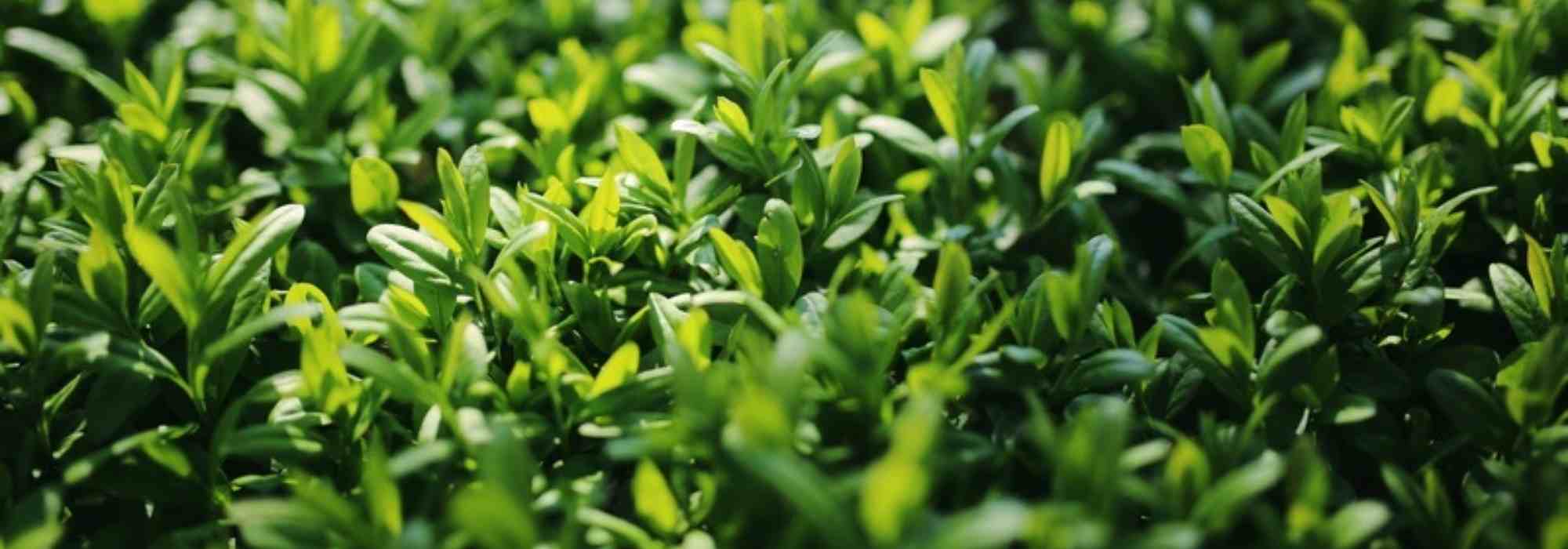
Privet or Ligustrum: buyer's guide
How to choose wisely among many species?
Summary
Privet, we all know it. Ubiquitous in the 1970s and 1980s, it took over urban landscapes and endlessly surrounded our homes with screening hedges.
This evergreen shrub in the Oleaceae family is nonetheless versatile in its uses; its flowering is a delight for gardener, pollinators and birds when summer arrives and it is covered in fragrant, melliferous inflorescences, then berries… Hardy, it grows rapidly, is undemanding, long-lived, disease-resistant and lends itself perfectly to pruning.
When you take a closer interest in this genus with its countless species, there are no fewer than fifty, including Ligustrum vulgare, japonicum, sinense, ovalifolium, ibota, lucidum… it’s hard to know which privet to choose! What sets them apart? How to make the right choice in nursery or garden centre? Which foliage should you opt for?
I invite you to take a fresh look at this ornamental shrub, which is far from commonplace. Discover its many faces to restore it to the place it deserves in your garden and better guide your choice.
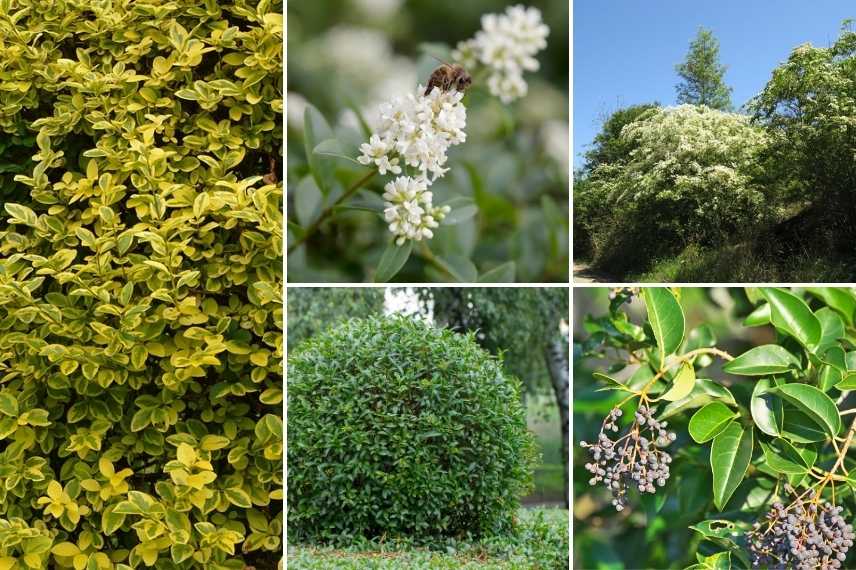
Privets display a wide variety of foliage and uses
→ Learn more about Privet with our complete fact sheet
Depending on foliage colour
Privet, a shrub essentially evergreen or semi-evergreen depending on severity of climate, declinates into a range of greens. Cultivars range from golden green, mid green, even dark green, to a whole range of very bright variegated forms…
As often, variegated foliage will retain better colour in sun, and light-green foliage will also remain so in sunny positions. Varieties with golden or variegated foliage are useful for drawing the eye to a slightly shaded area.
- Cultivars of privet with yellow or golden foliage bring a lot of brightness : Ligustrum vicaryi, Ligustrum ovafolium ‘Aureum’ a variegated variety edged with yellow, Ligustrum ovalifolium ‘Lemon Lime’ of a very light green
- Variegated foliage is abundant; it is one of the great qualities of privets, bringing contrast and shine in shrub beds and within mixed hedges : Ligustrum ibota ‘Musli’ has superb grey-green foliage edged with cream-yellow, Ligustrum lucidum ‘Tricolor’ is striking with its long pinkish and cream leaves, Ligustrum japonicum ‘Silver Star’ of a slightly greyed green marginate with cream-white etc.
- Uniform green foliage is ideal for use in clipped hedges, giving a slightly more classic effect and providing a pleasing unity of tones: Common privet (Ligustrum vulgare) of a dark green, Japanese privet (Ligustrum japonicum) with young coppery foliage then dark green, Ligustrum texanum with young shoots acid green then dark green, Ligustrum jonandrum of a beautiful glossy green…
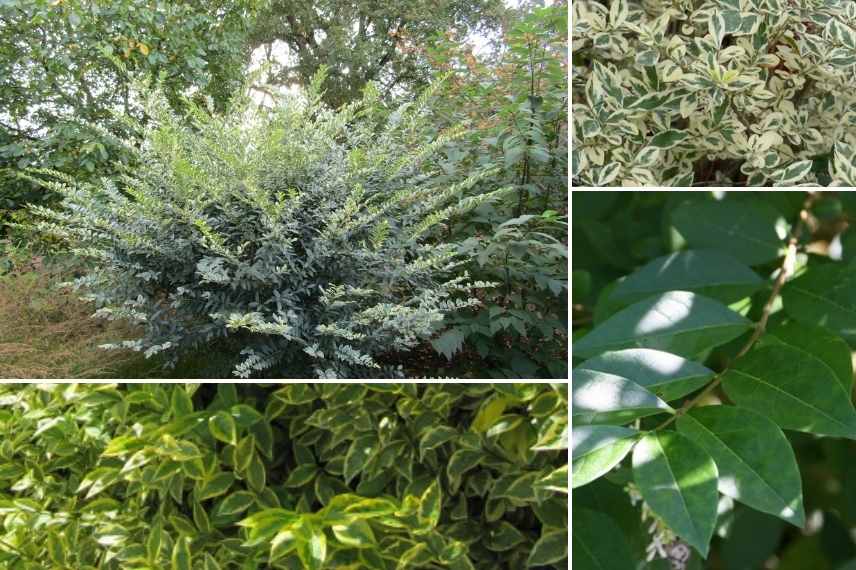
At top left, Ligustrum ibota ‘Muster’, bottom left, a variegated Ligustrum, top right, Ligustrum ovafolium ‘Argenteum’, bottom right Ligustrum ovafolium
You may also read
Privet, Ligustrum: planting, pruning and careDepending on use
You only imagined privet as a hedge, a use indeed well suited to this evergreen (or semi-evergreen) bush. It is time to explore the many other uses for it :
As a clipped hedge
This is obviously one of privet’s flagship uses: its foliage tolerates frequent pruning very well because it re-buds quickly, so it is a plant mainly used to create clipped hedges.
Vigorous, and upright in habit, the bush will branch out with pruning. It can be kept at 1.50–2 m in height without problems; clipped precisely several times a year, it will always retain its neat small foliage. Such a clipped hedge often serves as a privacy screen. The dense foliage and heavy branching of privet also make it an excellent windbreak hedge bush.
Choose an evergreen privet such as Ligustrum japonicum, Ligustrum ibota, Ligustrum lucidum, Ligustrum texanum with slow growth. For a low hedge, the common privet is best suited.

Clipped privet hedges, more or less formal, always elegant. Bottom right, a small low hedge of Ligustrum ovalifolium ‘Aureum’ contrasts nicely with a hedge of Berberis and hornbeams.
In an informal or mixed hedge
Personally, I find privet most ornamental when allowed to form an informal hedge. It is also charming in a rustic clump. Its flowering is preserved and you can enjoy its delightful summer scent, something well worth enjoying. Being particularly melliferous, privet will attract many pollinating insects to your garden, and you will enjoy its small dark berries from September onwards, much favoured by birds. Note that privets have a dense, running root system: nothing resists them and it will be difficult to grow anything at their feet once established.
For this use as an informal hedge, try to avoid a single-species hedge. Although robust, privet can be susceptible to root rot and your hedge could be entirely devastated by infection. Besides, it is always beneficial for biodiversity to intersperse other species… especially along a long stretch. Select privet species with a less upright habit, somewhat more flexible, even loose, which fit well into a natural setting.
Ligustrum sinense, Ligustrum japonicum, Ligustrum ovalifolium, Ligustrum lucidum are particularly suited to an informal, wild-looking hedge. You can of course choose variegated foliage on this type of hedge, for example with Ligustrum ibota ‘Musli’ (Muster).
This mixed hedge can include evergreen bushes of similarly flexible habit such as Phillyrea, Cotoneaster and Elaeagnus, and a number of other melliferous shrubs: dog roses, elder, wayfaring tree (Viburnum lantana), etc.
To compose a flowering hedge and enjoy privet’s sweet scents, do not prune it! Abelias, ceanothuses, Buddleias, cotoneasters, lavateras, escalonias… are fine shrubs to include in this type of hedge.
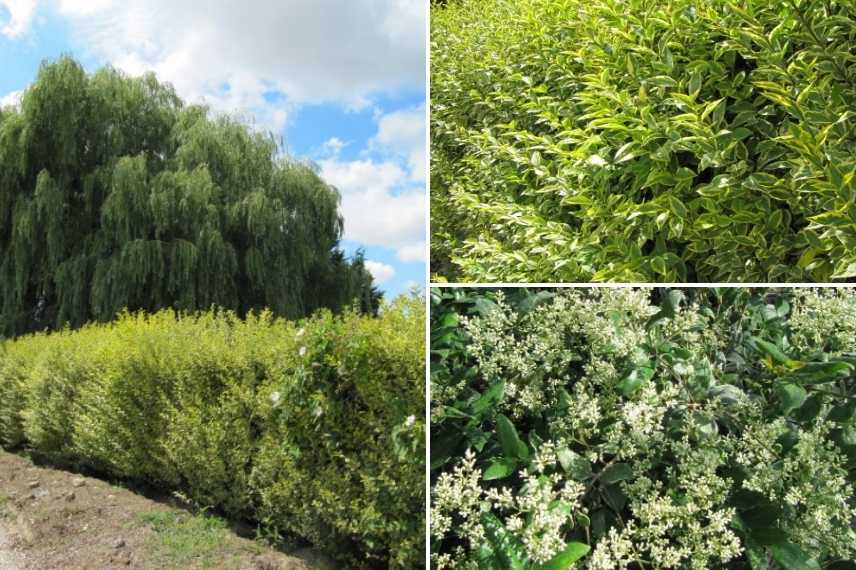
Privet left as an informal hedge allows you to enjoy its scented flowering and its supple, bushy silhouette
Trained as a tree
Less often considered, privet makes a perfect subject trained on a stem as a tree, with a trunk that will thicken over time. It then adopts a very different appearance and becomes a small ornamental tree with creamy, highly fragrant summer flowers. We recommend planting it as a specimen and not pruning it to obtain this handsome look, which makes it both a flowering and ornamental tree, while preserving its charming habit (you and birds will also enjoy its handsome black fruit). It can even serve as a small shade tree. Privet takes on this appearance as it ages, or if you train it with formative pruning.
Choose the taller-growing privets for this use: Ligustrum lucidum, Ligustrum texanum (Texas privet) or Ligustrum japonicum.
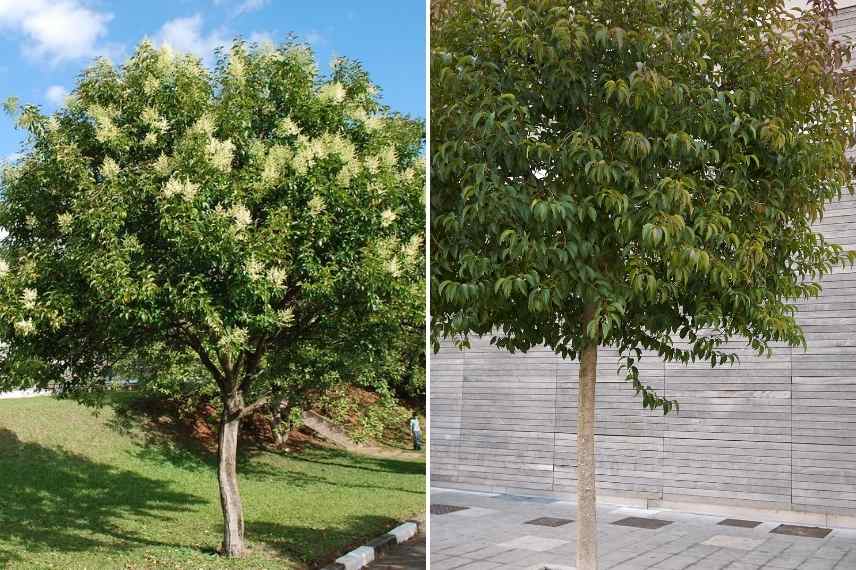
Two lovely Ligustrum lucidum on half-standards: left in flower (Photo: M. Halpern)
As a topiary
An evergreen bush that tolerates pruning so well is inevitably a topiary-specialist! This art, which consists of shaping by precision pruning into a wide variety of geometric forms or animals, requires bushes with small evergreen leaves that are not averse to repeated clipping. Box, yew, certain hollies and even bay laurel are often used to create all kinds of plant figures. In practice, privet is one of the best-suited bushes for topiary, as it is little affected by diseases and pests. Compared with box and yew, its more flexible foliage is not a drawback; it even creates a very attractive visual in tones lighter than many topiaries.
For this specific use, California privet (Ligustrum ovalifolium) or Japanese privet (Ligustrum japonicum) are ideal with their small evergreen leaves. Ligustrum delavayanum can also be used.
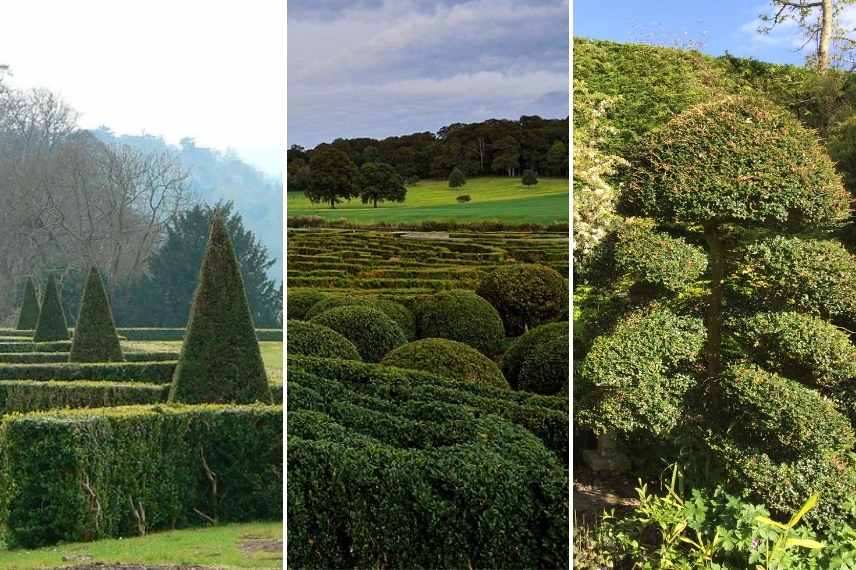
Privets clipped into various shapes: low hedges and cones, balls and mazes, or Japanese-style topiary in “Niwaki” pruning
In a container
Using privet in pots or containers is perfectly possible: on an apartment terrace you can use relatively tall varieties as a privacy screen or windbreak, in combination with some evergreen Euonymus, Elaeagnus, Photinias, or Pittosporums for example.
Ligustrum japonicum ‘Rotundifolium’, with its handsome small rounded glossy leaves, its compact, spreading habit, its slow growth and small size (1.50 m) is a fine subject for container planting: it will suit a contemporary terrace as well as a balcony or small garden.
Another use for container planting is to make privet a more ornamental specimen, trained on a stem or half-standard and clipped into a ball, using slow-growing cultivars that tolerate pruning extremely well. In nurseries you will easily find plants grafted at 1 m or 1.50 m: the compact crown clipped into a spherical ball looks particularly striking atop a stem of around 1.50–2 m. Choose Ligustrum delavayanum and Ligustrum jonandrum (Yunnan privet), both of Chinese origin. In pots they are superb in formal-style gardens and provide elegant verticality.
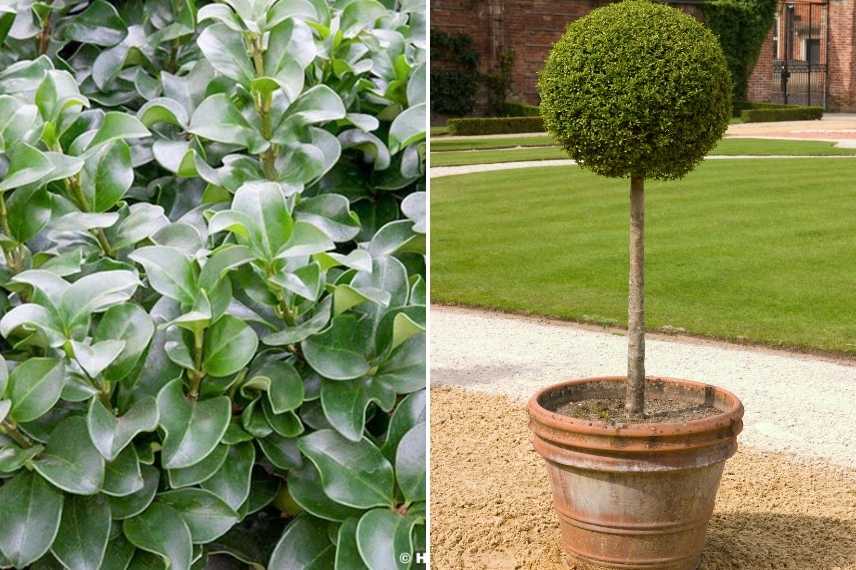
Fine foliage of Ligustrum japonicum ‘Rotundifolium’ on the left, and Ligustrum delavayanum in a pot
As a bonsai
Surprisingly, given its rapid growth and adult size, privet adapts well to bonsai. It is actually its ability to re-bud quickly after heavy pruning that makes it so interesting for this use in bonsai, the art of miniaturised plants that involves constant pruning to keep them small. Choose Ligustrum sinense (Chinese privet), Ligustrum ovalifolium or Ligustrum lucidum, which are perfect for this use.
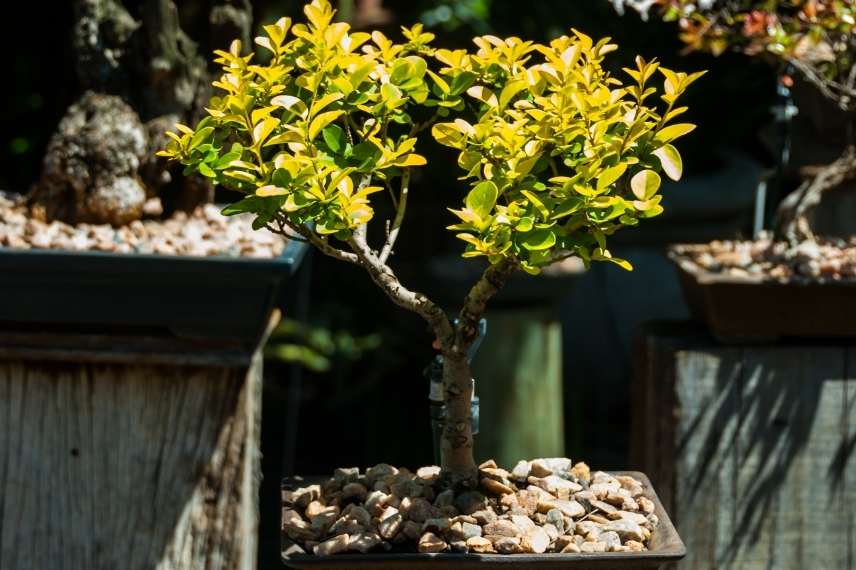
Privet is also suitable for bonsai
Discover other Ligustrum - Privet
View All →Available in 2 sizes
Available in 3 sizes
Available in 2 sizes
Available in 1 sizes
Available in 1 sizes
Available in 1 sizes
Available in 7 sizes
Available in 1 sizes
Available in 5 sizes
Available in 1 sizes
By foliage persistence
Mainly used for their evergreen foliage, some privets are semi-evergreen. Make a clear distinction, because the different uses mentioned above (trimmed hedge, topiary, bonsai) require, in some cases, evergreen foliage only, for year-round decorative effects.
Note that the notion of semi-evergreen depends on climate and region. Some semi-evergreen privets will retain their foliage in mild climates and temperate regions.
Evergreen foliage : Ligustrums japonicum, Ligustrums lucidum, Ligustrum delavayanum, Ligustrum jonandrum
Semi-evergreen foliage : Ligustrum ibota, Ligustrum ovalifolium, Ligustrum sinense, Ligustrum vulgare, Ligustrum obtusifolium, Ligustrum vicarayi…
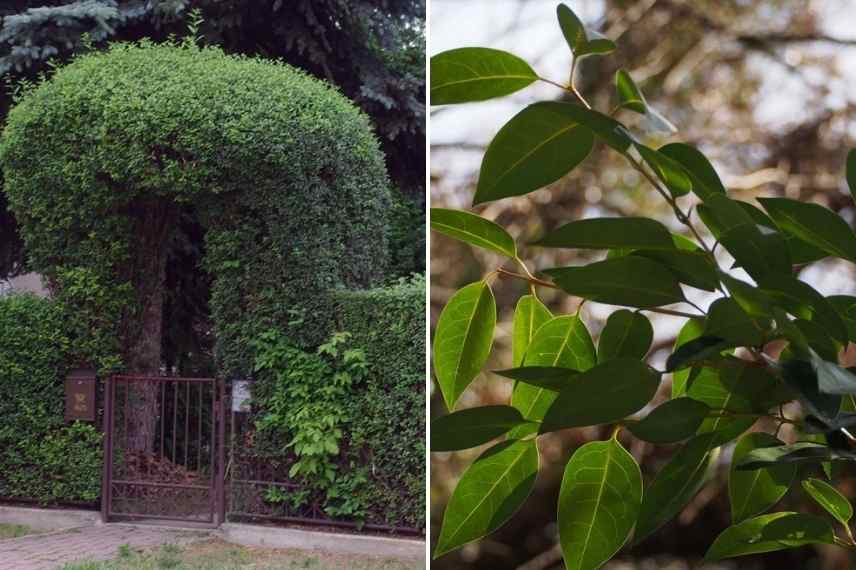
Ligustrum vulgare (Photo: Babij), and Ligustrum lucidum
Based on flowering and fragrance
If it’s the particularly sweet, intense flowering that appeals to you, note these slight differences between the main cultivars: flowering period and intensity should be taken into account when choosing. But beware, honeyed scent can be heady; make sure you like it by selecting specimens in flower before deciding!
Flowering takes place for most varieties in summer, between June and August. It is always cream-white, Ligustrum jonandrum (Chinese privet) having white flowers slightly tinged with purple. This variety in fact flowers a little earlier, in spring.
Inflorescences remain fairly inconspicuous on all privets. Ligustrum lucidum certainly has the most striking flowering, abundant in late summer and even into early autumn: its flowers 15 to 20 cm long are particularly fragrant.
Ligustrum obtusifolium ‘Ilvomassi’ is also a very fragrant variety, with flowers measuring 10 to 12 cm appearing in early summer. Common privet (Ligustrum vulgare) and Japanese privet (Ligustrum japonicum) are two varieties also notable for their very pleasant scent, with terminal panicles of flowers 10 to 15 cm between June and July (until September for Ligustrum japonicum).
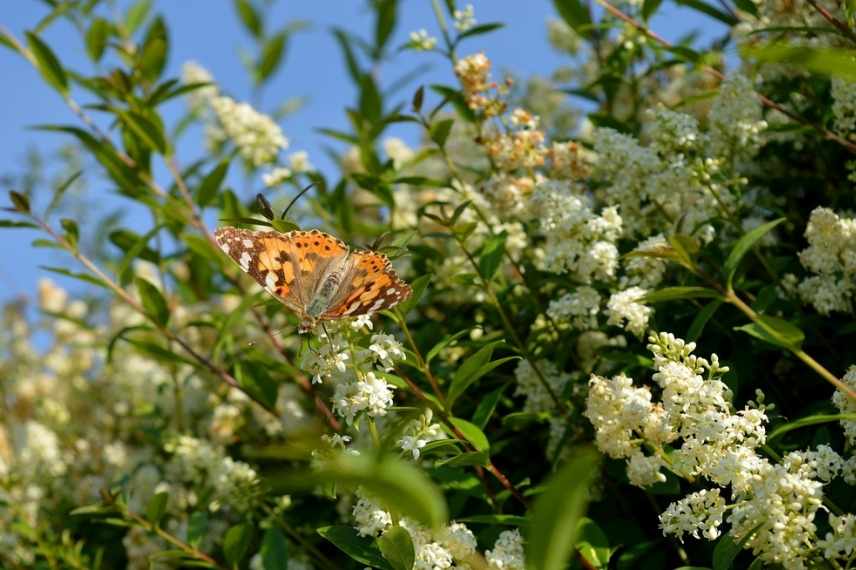
Privet flowers are not only beautiful and fragrant, but extremely melliferous
- Subscribe!
- Contents
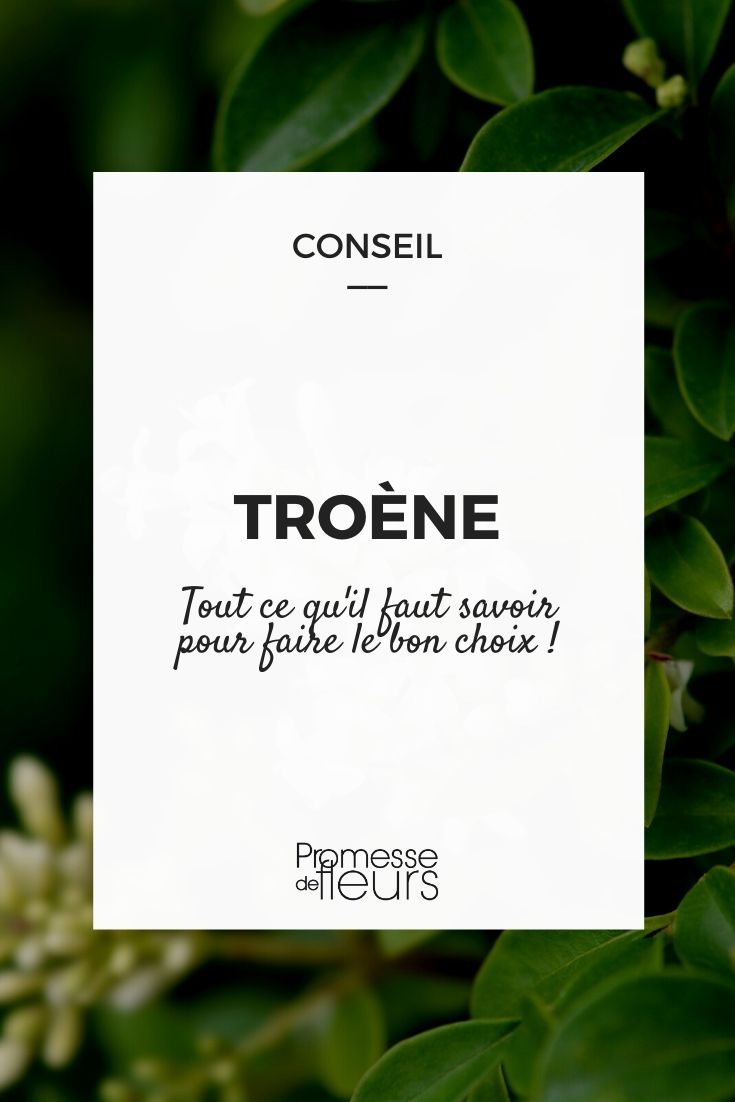
































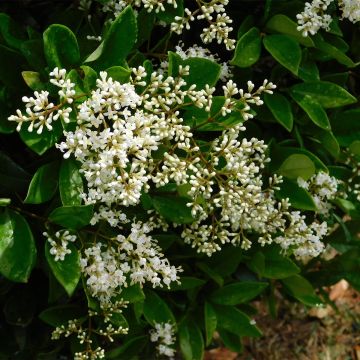
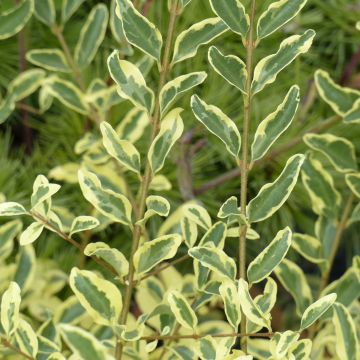
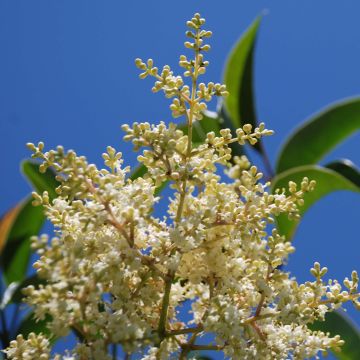
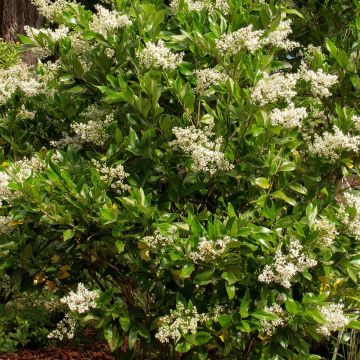
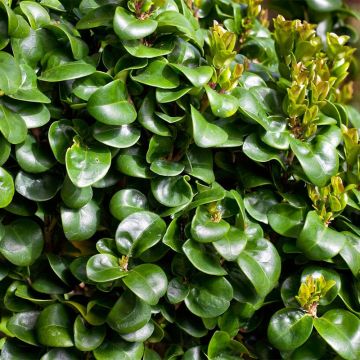

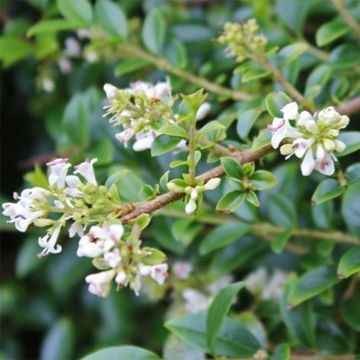
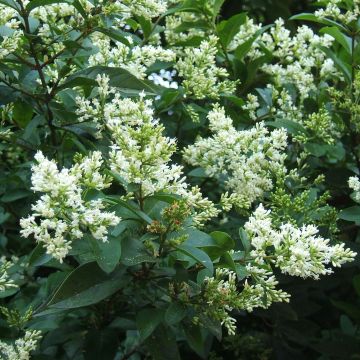

Feedbacks